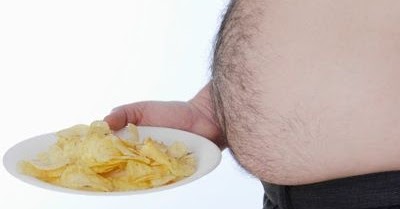A Few Red Potato Chips Can Trick The Mind And Reduce Snacking ~ Mental Health Blog

Researchers of Cornell’s Food and Brand Lab may have uncovered a way to stop snacking once a serving size has been reached. Basically, a red potato chip is used as a marker and subconscious stop sign.
Brian Wansink, the John Dyson Professor of Consumer Behavior and author of the best-seller “Mindless Eating: Why We Eat More Than We Think,” alongside psychologists Andrew Geier of Yale University and Paul Rozin of the University of Pennsylvania studied 98 college students divided amongst 2 groups. Both groups watched video clips while snacking on Lays Stackables; however one of the groups ate from containers where a certain number of chips were dyed red.
First, researchers placed a red chip at ever 7 or 14 chips to represent 1 or 2 servings respectively. On the second round of studies, researchers placed a red chip at every fifth and tenth chip.
“Unaware of why some of the chips were red, the students who were served those tubes of chips nonetheless consumed about 50 percent less than their peers: 20 and 24 chips on average for the seven-chip and 14-chip segmented tubes, respectively, compared with 45 chips in the control group; 14 and 16 chips for the five-chip and 10-chip segmented tubes, compared with 35 chips in the control group.”
Additionally, participants were more able to accurately estimate the correct number of chips they had consumed if they ate from the container that consisted of red chips acting as serving size markers. On average, those who ate from the containers without red chips actually ate roughly 13 more chips than they thought, whereas those who ate from the containers with red chips guessed the correct amount of chips they had consumed within 1 chip.
“People generally eat what is put in front of them if it is palatable,” said Brian Wansink, Cornell Food and Brand Lab director. “An increasing amount of research suggests that some people use visual indication — such as a clean plate or bottom of a bowl — to tell them when to stop eating.”
Perhaps the most shocking finding is that with a simple red marker, caloric intake had been reduced by 250 calories. Imagine the impact such a basic idea could have on the obesity epidemic in various parts of the world. Evidently, this would snowball into a tremendous effect on health care, which could, in turn, save billions in spending. However, are these companies willing to alter their products to better the health and welfare of their consumers so they consume less? Conceivably an increase in cost could be enough to offset any lost profit; however the consumer may also choose another less expensive product instead. Either way, it seems the only gain is for the consumer.
Edible Stop Signs? A Few Red Chips in the Stack Cut Snacking in Half
Calories, Food, Mindless Eating, Obesity, Psychology of Eating, Snacking








